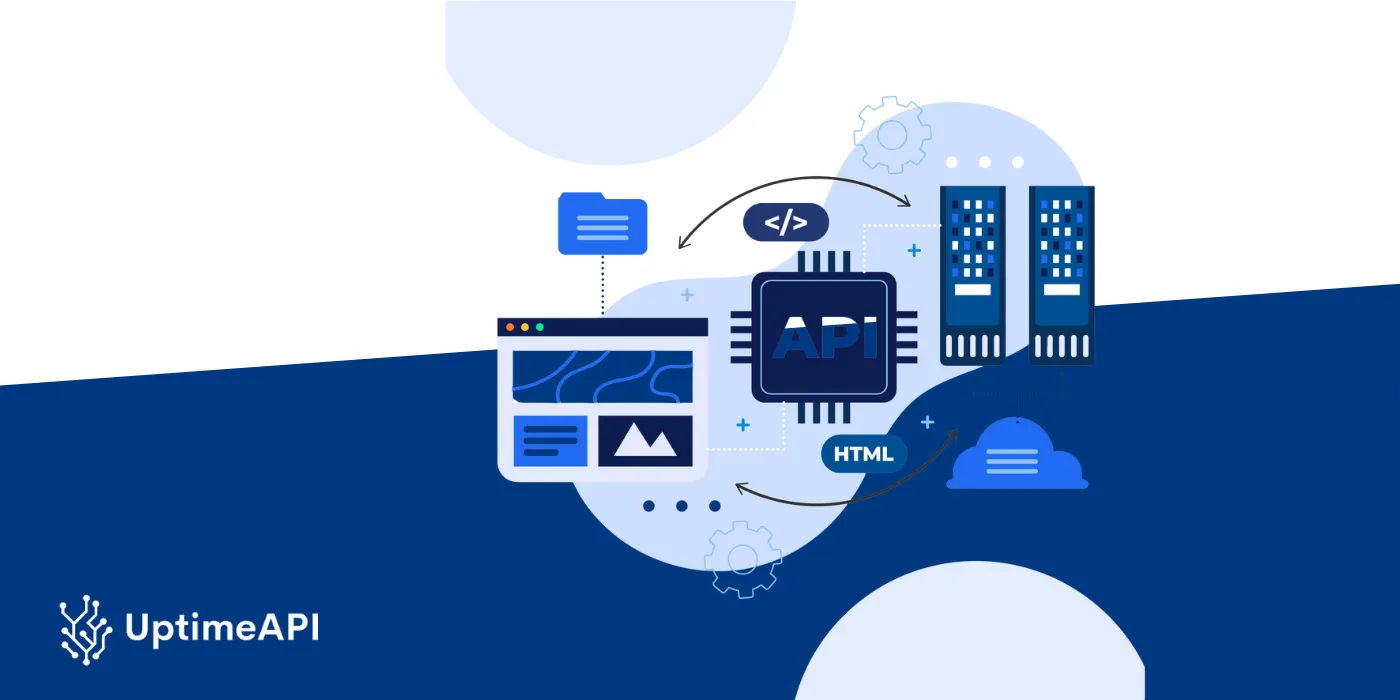API Monitoring: How To Track API Performance

In the digital landscape, Application Programming Interfaces (APIs) play a crucial role in enabling seamless communication between different software applications and systems. Whether you're a developer, a business owner, or an IT professional, monitoring the performance of your APIs is essential to ensure optimal functionality and user experience. In this article, we'll delve into the fundamentals of API monitoring and explore how Uptime API can help you track and optimize your API performance effectively.
Understanding API Monitoring
API monitoring involves the continuous observation and analysis of API endpoints to measure their performance, reliability, and availability. It helps identify potential issues such as latency, errors, and downtimes that can impact the performance of your applications and services.
Why API Monitoring Matters
- Ensuring Reliability: Reliable APIs are critical for maintaining seamless communication between different systems. Monitoring helps detect and address any issues that may affect the reliability of your APIs.
- Improving Performance: Monitoring allows you to track key performance metrics such as response time and throughput, helping you identify bottlenecks and optimize API performance for better user experience.
- Minimizing Downtime: Downtime can lead to lost revenue, decreased productivity, and damage to your brand reputation. By monitoring your APIs proactively, you can minimize downtime and ensure continuous service availability.
Key Metrics to Monitor
When it comes to API monitoring, several key metrics can provide valuable insights into the performance and health of your APIs:
- Response Time: The time it takes for an API endpoint to respond to a request. High response times can indicate performance issues that need to be addressed.
- Error Rate: The percentage of failed API requests compared to the total number of requests. Monitoring error rates helps identify potential bugs or issues in your API implementation.
- Throughput: The rate at which requests are processed by the API within a specific time frame. Monitoring throughput helps you understand the load on your API and its capacity to handle incoming requests.
- Availability: The percentage of time that the API is accessible and operational. Monitoring availability helps ensure that your API meets service level agreements (SLAs) and maintains continuous uptime.
Introducing Uptime API
Uptime API is a powerful tool designed to simplify API monitoring and ensure the reliability and performance of your APIs. With its intuitive interface and robust features, Uptime API allows you to monitor your APIs in seconds, providing real-time insights into their performance and health.
Getting Started with Uptime API
- Sign Up: Start by signing up for a Uptime API account. You can choose from a range of subscription plans based on your monitoring needs.
- Add Monitors: Once you've signed up, you can add monitors for your API endpoints. Simply provide the URL of the endpoint you wish to monitor, and Uptime API will start tracking its performance.
- Set Alerts: Uptime API allows you to set up custom alerts based on specific performance thresholds. Receive instant notifications via email or SMS when an API endpoint experiences issues such as high response times or downtime.
- Monitor Performance: Gain valuable insights into your API performance with Uptime API's comprehensive dashboard. Track key metrics, view historical data, and identify trends to optimize your API for better performance and reliability.
Benefits of Using Uptime API
- Real-Time Monitoring: Uptime API provides real-time monitoring, allowing you to detect and respond to issues as soon as they occur.
- Customizable Alerts: Set up custom alerts to notify you of any performance issues or anomalies, ensuring timely action and resolution.
- Historical Data: Access historical data and performance reports to analyze trends, identify patterns, and make informed decisions about optimizing your APIs.
- Easy Integration: Uptime API can be easily integrated into your existing workflows and tools, providing seamless monitoring without any hassle.

Best Practices for API Monitoring
To make the most of API monitoring with Uptime API, consider implementing the following best practices:
- Monitor Critical Endpoints: Identify and prioritize the most critical endpoints in your API ecosystem for monitoring to ensure maximum coverage and protection.
- Set Realistic Thresholds: Establish realistic performance thresholds based on your application's requirements and user expectations to effectively monitor API performance.
- Regularly Review Metrics: Take time to review and analyze monitoring metrics regularly to identify any emerging issues or areas for improvement in your API infrastructure.
- Collaborate Across Teams: Foster collaboration between development, operations, and business teams to ensure a holistic approach to API monitoring and performance optimization.
Conclusion
Effective API monitoring is essential for ensuring the reliability, performance, and availability of your APIs in today's digital landscape. With Uptime API, you can simplify the monitoring process and gain valuable insights into your API performance in seconds. By following best practices and leveraging the powerful features of Uptime API, you can optimize your APIs for better user experience and business outcomes. Sign up for Uptime API today and take control of your API monitoring needs effortlessly.